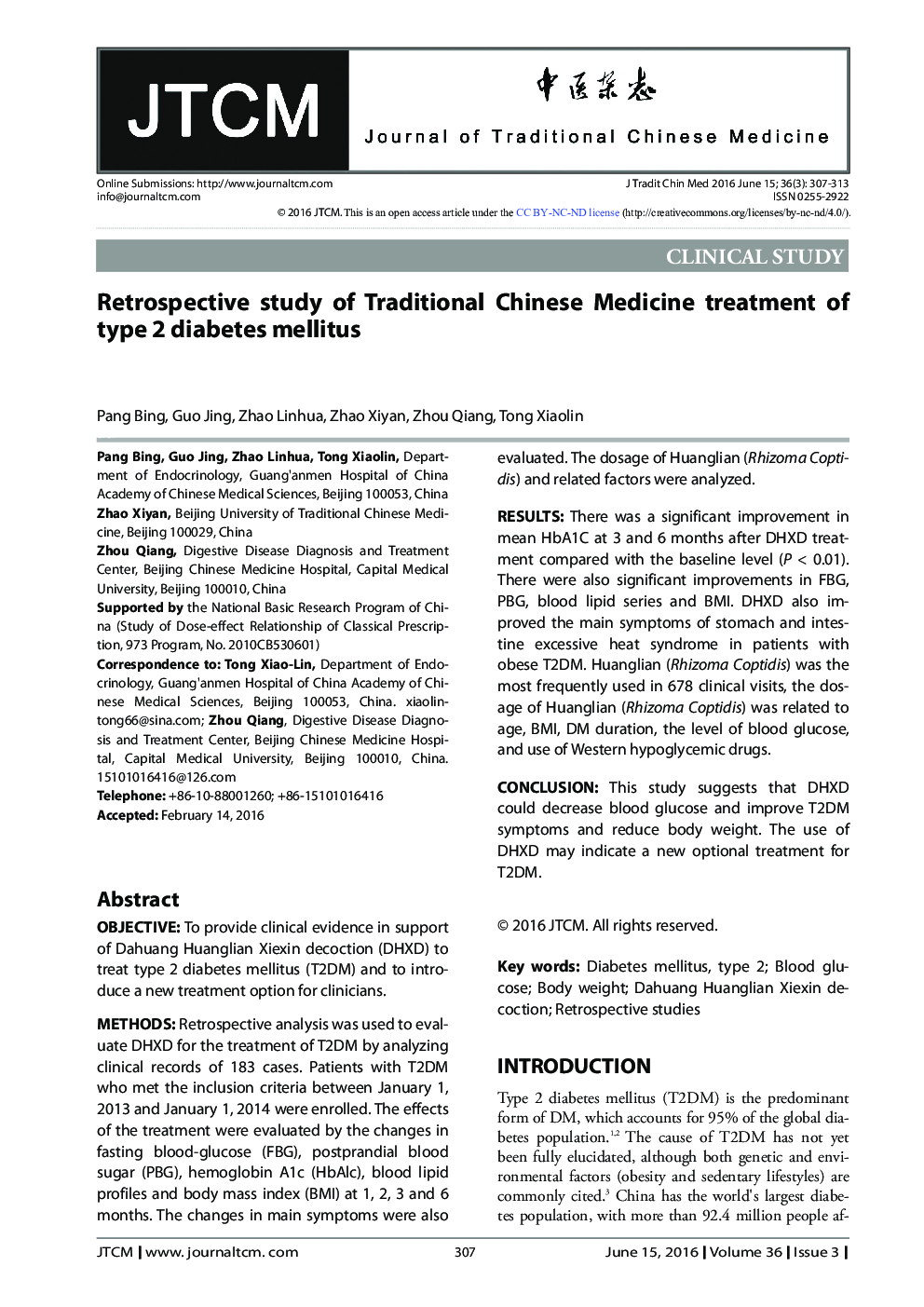| Article ID | Journal | Published Year | Pages | File Type |
|---|---|---|---|---|
| 4200946 | Journal of Traditional Chinese Medicine | 2016 | 7 Pages |
ObjectiveTo provide clinical evidence in support of Dahuang Huanglian Xiexin decoction (DHXD) to treat type 2 diabetes mellitus (T2DM) and to introduce a new treatment option for clinicians.MethodsRetrospective analysis was used to evaluate DHXD for the treatment of T2DM by analyzing clinical records of 183 cases. Patients with T2DM who met the inclusion criteria between January 1, 2013 and January 1, 2014 were enrolled. The effects of the treatment were evaluated by the changes in fasting blood-glucose (FBG), postprandial blood sugar (PBG), hemoglobin A1c (HbAlc), blood lipid profiles and body mass index (BMI) at 1, 2, 3 and 6 months. The changes in main symptoms were also evaluated. The dosage of Huanglian (Rhizoma Coptidis) and related factors were analyzed.ResultsThere was a significant improvement in mean HbA1C at 3 and 6 months after DHXD treatment compared with the baseline level (P < 0.01). There were also significant improvements in FBG, PBG, blood lipid series and BMI. DHXD also improved the main symptoms of stomach and intestine excessive heat syndrome in patients with obese T2DM. Huanglian (Rhizoma Coptidis) was the most frequently used in 678 clinical visits, the dosage of Huanglian (Rhizoma Coptidis) was related to age, BMI, DM duration, the level of blood glucose, and use of Western hypoglycemic drugs.ConclusionThis study suggests that DHXD could decrease blood glucose and improve T2DM symptoms and reduce body weight. The use of DHXD may indicate a new optional treatment for T2DM.
